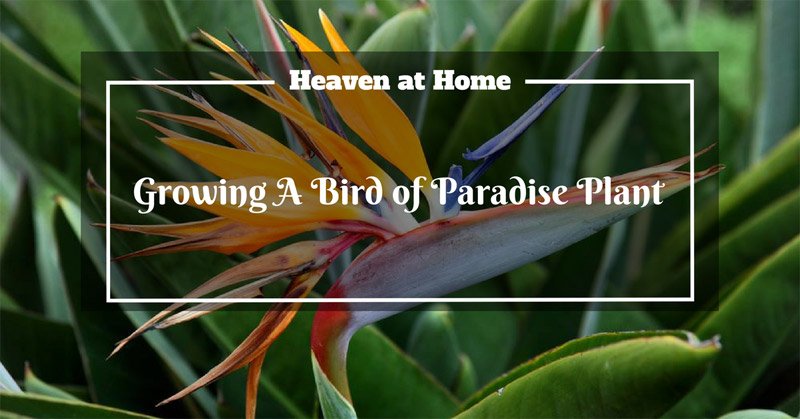
Exotic plants get a reputation for being difficult to grow, especially for beginner gardeners. And it’s usually justified, as most species are very particular about temperature and soil or require precise trimming to promote proper development. Some tropical plants like the Calathea ornata can only be efficiently grown in a greenhouse because of how specific their needs are.
Luckily, one of the most beautiful flowers in the world is actually not that difficult to raise. The Strelitzia (commonly known as the Bird of Paradise plant) is a long-lived specimen that gets its name from its flowers resembling the plumage of an actual bird of paradise. A special variant with yellow flowers called “Mandela’s Gold” can also be found, but is far less common (before it was commercially released, botanists had problems getting seeds from yellow plants to produce yellow flowers themselves). With large, oval-shaped leaves and an average height of over 6 feet (and that’s just the more commonly used variant – the less common Strelitzia Nicolai grows to 6 metres tall and is impractical to raise for anyone who doesn’t own a huge enough garden to support it as it cannot be pruned), this South African native has a striking appearance even outside of its flowering period.
Fun fact:
The Strelitzia name takes its roots (no pun intended) from the family name of botanist and English Queen Charlotte of Mecklenburg-Strelitz, who played a major part in developing this plant in the Royal Kew Gardens in 1773. The plant was also declared the official flower of Los Angeles, California
How’s the Weather Down There?

In order to understand the specifics of what the bird of paradise plant wants, we must consider its natural habitat. South Africa’s weather is characterized by summer rains (it instead rains in the winter in places like Cape Town due to its Mediterranean climate), with the eastern region receiving most of that rainfall.
The average maximum daily temperature in the Highveld region (the eastern plateau) is 26 °C, which is considerably more pleasant than that of the north-western deserts. This is caused by the increased elevation and explains why the bird of paradise plant thrives in average home temperatures as a houseplant.
What Should You Provide for Your Strelitzia?

Soil
Light Requirements
Temperature
Humidity
Watering
Fertilization
Grooming and Re-Potting
Dealing With Pests
Extra Tip:
Strelitzia leaves are poisonous if ingested in large amounts by humans or their pets, causing nausea and vomiting. Make sure your plant is located somewhere your pets or children cannot easily get to it if you notice suspicious leaf damage.
Propagating the Strelitzia

The most convenient way to grow new plants from a fully grown bird of paradise is through seeds. They’re black and have adorable tufts of hair growing out. Take that hair off and plant them half an inch deep in well-drained soil. Before planting, keep them soaked in room temperature water for a few days, changing the water each day. Make sure the soil stays moist and warm.
Alternatively, you can use division, which is riskier but produces quicker results. The next time you re-pot your plant, unravel the roots thoroughly then cut the middle part carefully with a sterilized knife to separate the two plants. Apply rooting hormone and don’t water for a few days to let the roots recover. Plant the new plant in a smaller pot than you just used, to encourage quicker blooming.
Raising a bird of paradise plant is incredibly rewarding
Both the plant and its flowers are long-lived, and you should expect to see blooming each year after it begins (anywhere from 3 to 6 years after planting). The plant does well in containers, and will usually steal attention from everything else in its surroundings. If you can grow it, your neighbors probably can too, so it makes a lovely gift for anyone who’s interested in houseplants as a hobby or simply likes great decorations and is willing to put in a little work for it.
There you have it, a full guide to growing this incredible flower in your home.
Let us know what you think about it, and don’t forget to share the article with your friends who adore the bird of paradise plant!
